You can contact LEARNZ, part of CORE Education, at:
Postal Address:
PO Box 13 678,
Christchurch 8141,
New Zealand
<- Homepage: Our Primary Industries: Unpacking the apple story
Kia ora koutou,
People have been selectively breeding plants and animals for centuries. Today you wanted to find out how scientists are selectively breeding apples, so you headed out to the lab at Plant and Food Research. Here you met Vincent Bus and Chrissy Marshall. They showed you some of the work they have been doing to create new apple varieties. They also answered questions from Tamatea Intermediate School during our live web conference. Vincent spoke about some of the ways that apple pests and diseases are managed. You can listen to a recording of this web conference to find out more.
Creating new apple varieties
After the web conference Chrissy showed you how to collect pollen from a flower. To selectively breed apples, you need to find two different apple trees which grow well and produce tasty apples. Once you have found your two parent trees you can do the job that bees normally do. This involves collecting pollen from the flowers of one tree and transfering it to a flower on the other tree. This fertilised flower will then produce an apple from which you can collect seed to grow a new tree. This selective breeding is not genetic engineering, it is choosing the best parent trees possible. This is how scientists have developed new apple varieties. Scientists have crossed Royal Gala and Braeburn apples to create different varieties such as Jazz, Envy and Lemonade Apples. This process can take a long time. It might take fifteen years or more to develop healthy trees and produce the kind of fruit that people want to eat. Watch the video about this.
Grafting onto rootstocks
Apple growers graft apple trees on to rootstocks so that they can get the best type of tree as well as the best apples. Rootstocks are grown to be resistant to disease and because they produce a tree of a certain size. People can then graft an apple tree that produces the best fruit onto this rootstock. This grafting process is done at the nursery. Seedlings are grown for about a year before they are planted in orchards. Yoko Yokishawa showed you some of the work she has been doing to develop strong rootstocks. She has been breeding rootstocks that are resistant to pests such as woolly apple aphid. This tiny aphid becomes covered in fluffy white threads as it grows. When it feeds it injects poisons into the plant which damages it. If rootstocks show resistance to the aphid, they are used to grow more rootstocks. You can watch the video about this.
Testing Apples
Scientists at Plant and Food Research test a lot of apples. They want to find out which apples taste best and which apples stay fresh for longer. You met Hannah Lloyd who showed you some of the ways you can test apples. She had a lab full of interesting machines and equipment. She had machines to test apple firmness, sweetness and acidity. If an apple is acidic it can taste sour. Because most of our apples are exported it’s important that apples stay fresh for a long time. Apples release ethylene which is a gas that causes fruit to ripen. The lower the ethylene levels, the longer fruit will last. Keeping fruit in the fridge will lower ethylene levels. Some cool stores also use a smart fresh system which uses a gas to slow ethylene production. This technology is helping our apple industry to sell more apples over a longer period of time.
Trees for the future
You ended the day at a trial orchard with Jess Byrne from Plant and Food Research. She showed you how she uses sensors to measure the amount of sunlight parts of apple trees receive. The more sunlight that leaves get the more energy they can store and the more fruit they can produce. Jess has been looking at how different tree shapes can affect the amount of fruit that trees produce. She was excited to see the new growing systems producing so much more fruit. The trial has been running for five years. The data collected will help apple growers to choose the best growing systems for the future. You can see this in the video.
It has been a busy day looking at how science is helping to improve our apple industry, but there is still more to learn. Tomorrow you will head back to Plant and Food Research to see how scientists are working to reduce apple pests and diseases.
See you in the morning,
Shelley the LEARNZ field trip teacher.
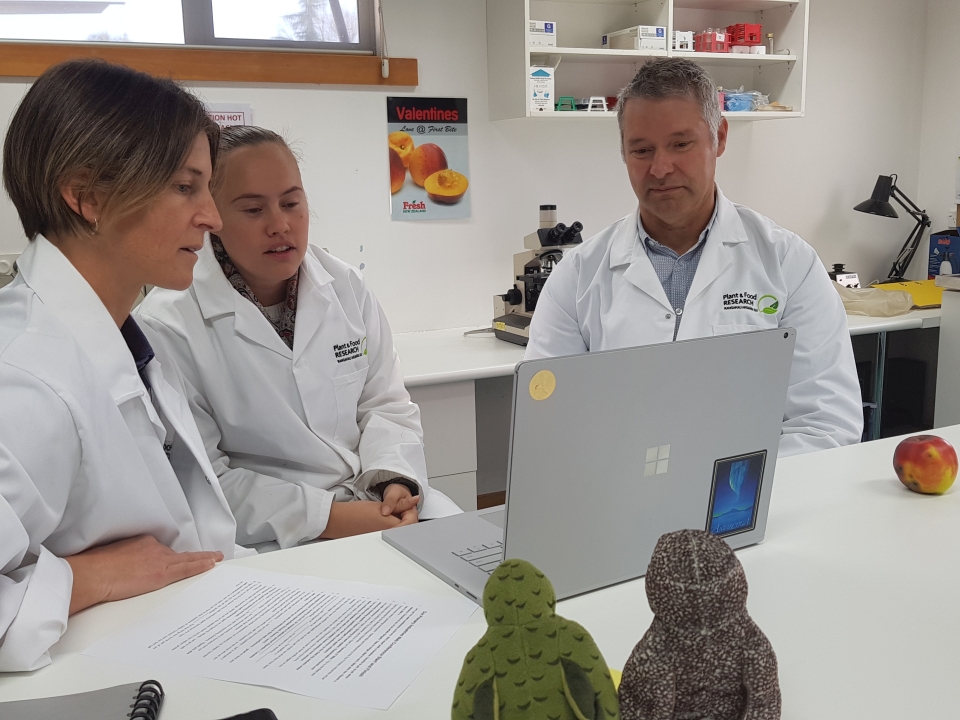
Shelley, Chrissy and Vincent talk to students from Tamatea Intermediate School during the live web conference. Image: Andrew Penny, LEARNZ.
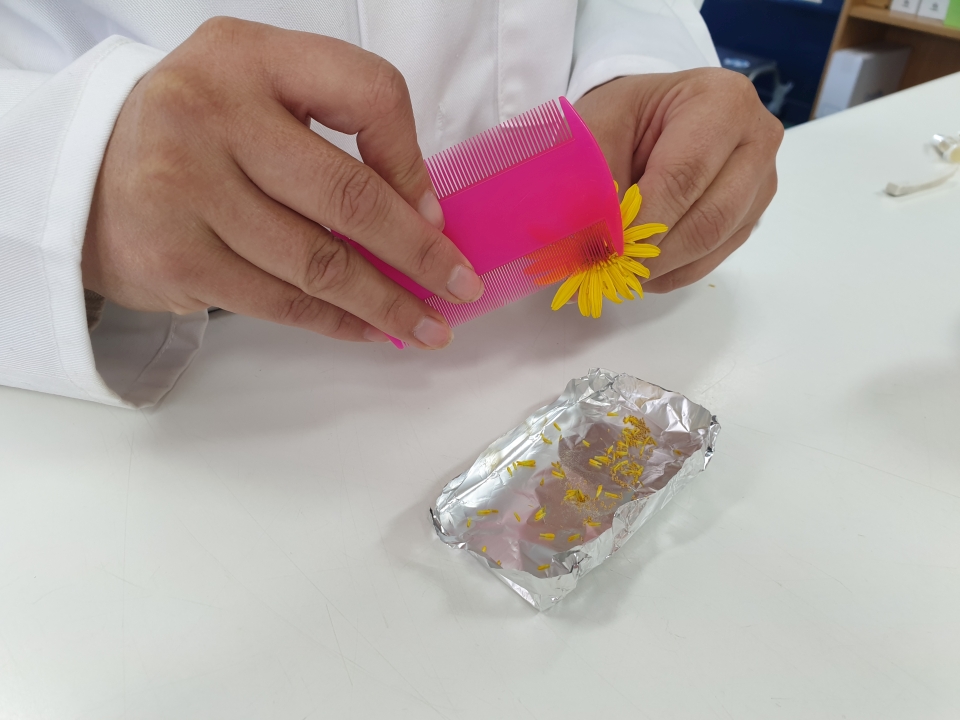
Chrissy shows you how to get the pollen from a flower so it can be used to fertilise another flower. Why would scientists want to do this? Image: Shelley Hersey, LEARNZ.
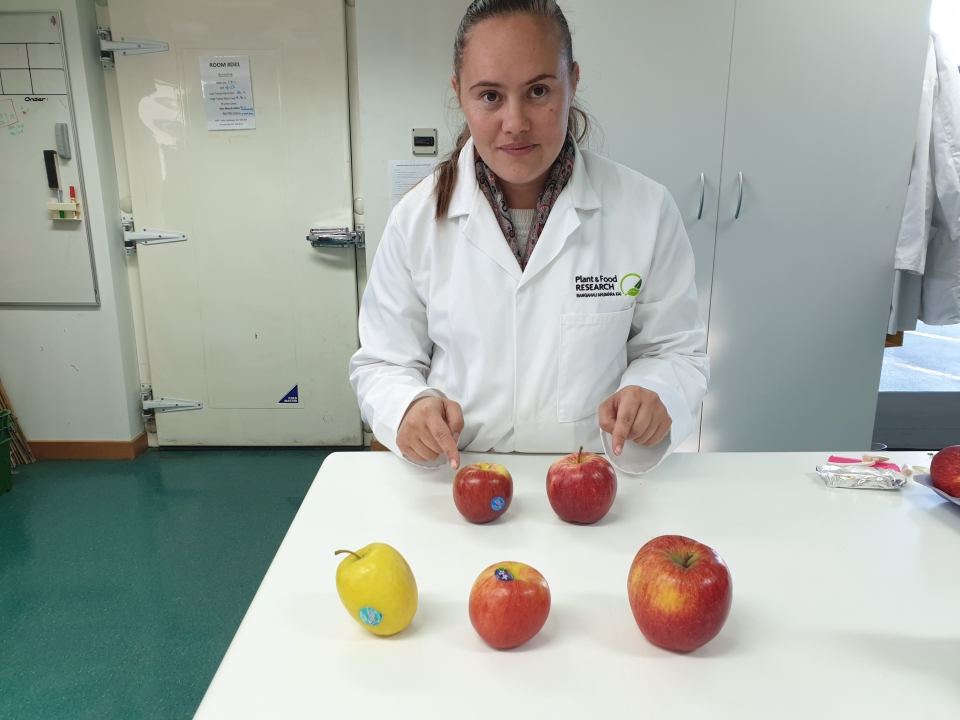
Chrissy shows you the Braeburn and Royal Gala apple parents that were crossed to produce Lemonade, Jazz and Envy apple varieties. Image: Shelley Hersey, LEARNZ.
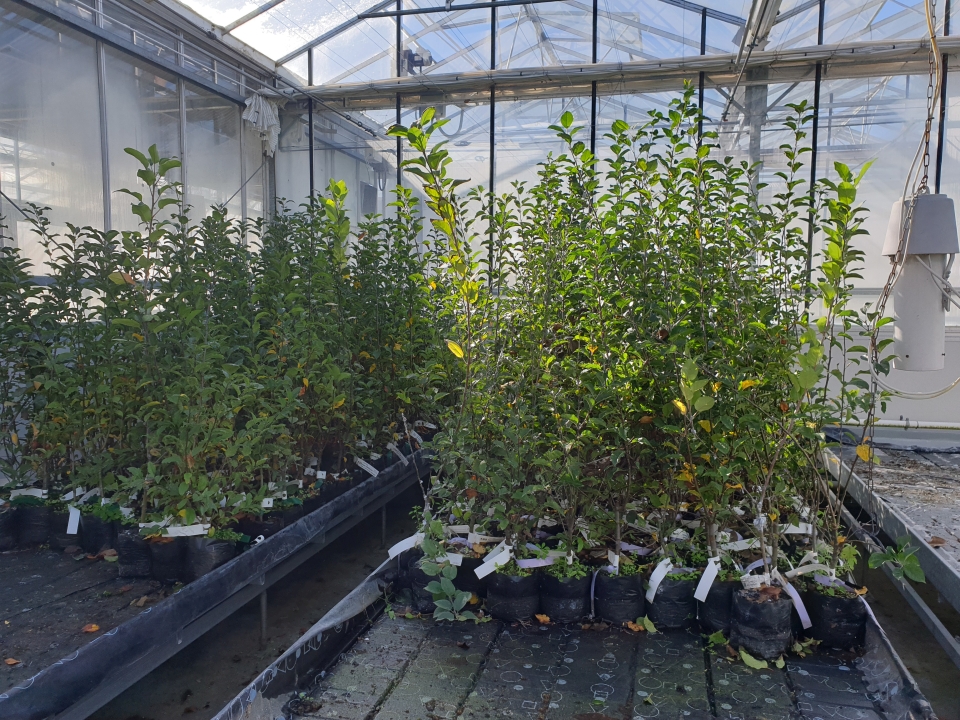
These apple rootstocks have been bred to be resistant to disease. Image: Shelley Hersey, LEARNZ.
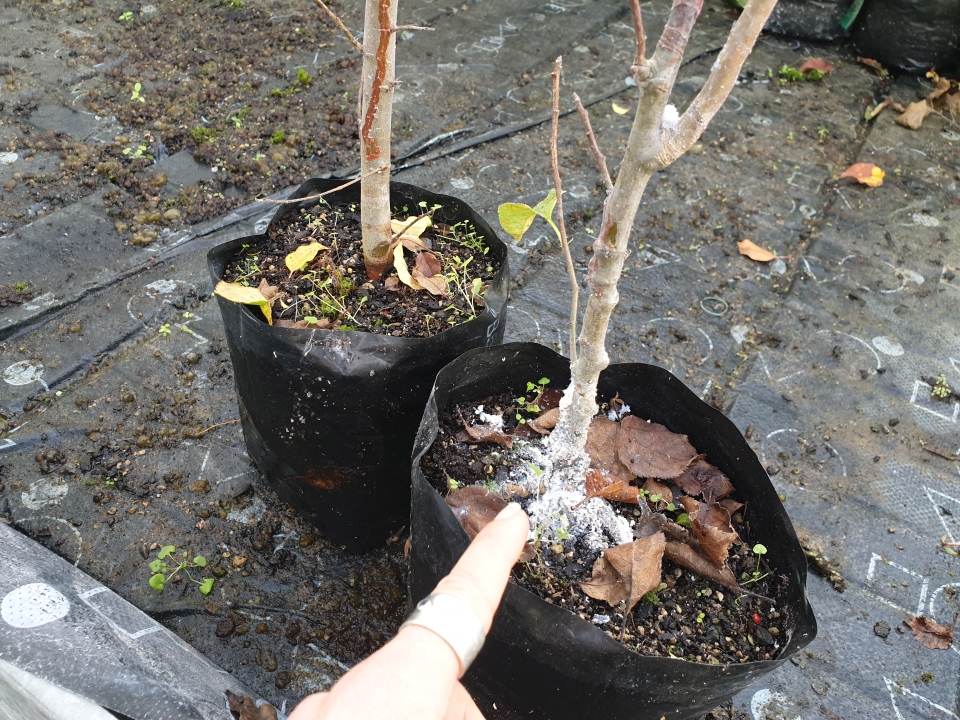
The rootstock on the left is resistant to woolly apple aphid while the one on the right is not. How does this aphid affect apple trees? Image: Shelley Hersey, LEARNZ.
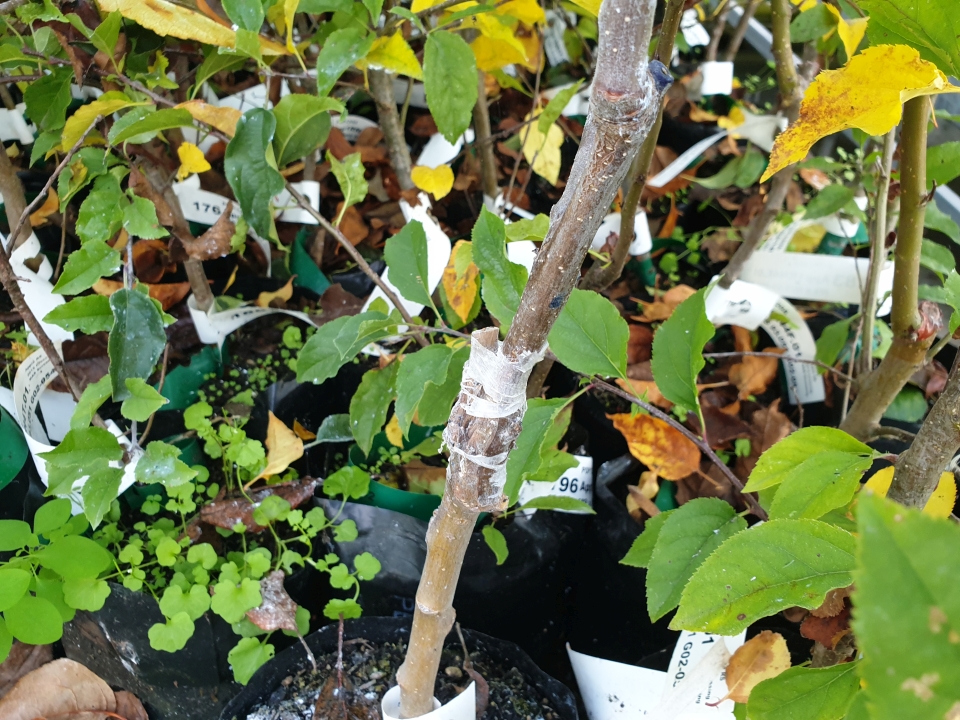
You can see where an apple tree bud has been grafted on to this rootstock. Why are rootstocks used? Image: Shelley Hersey, LEARNZ.
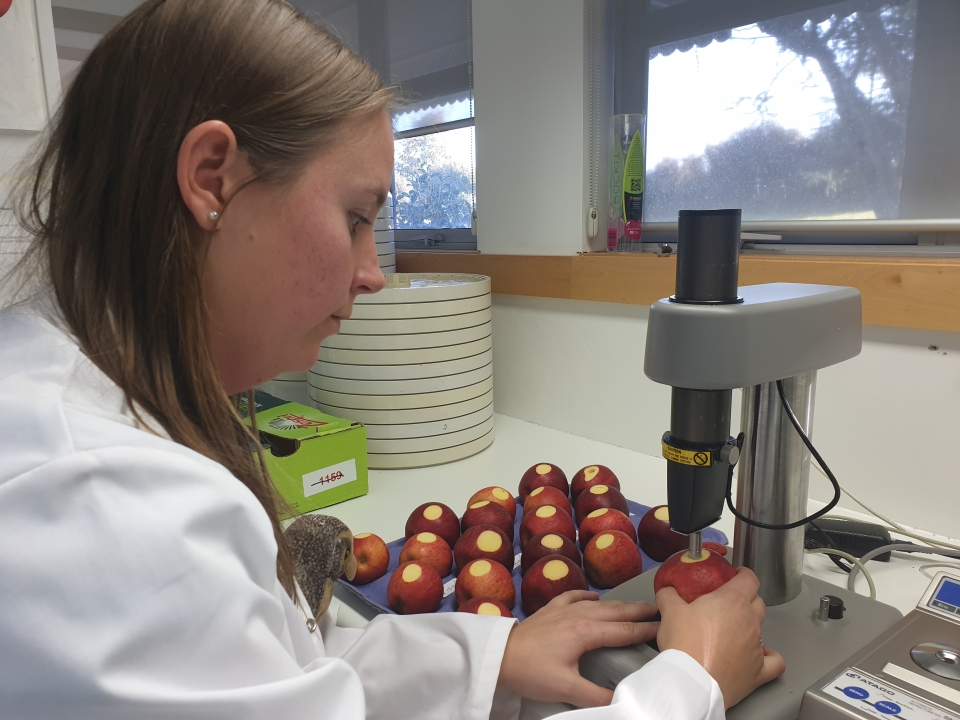
Hannah tests the firmness of an apple. What is firmness a sign of? Image: Shelley Hersey, LEARNZ.
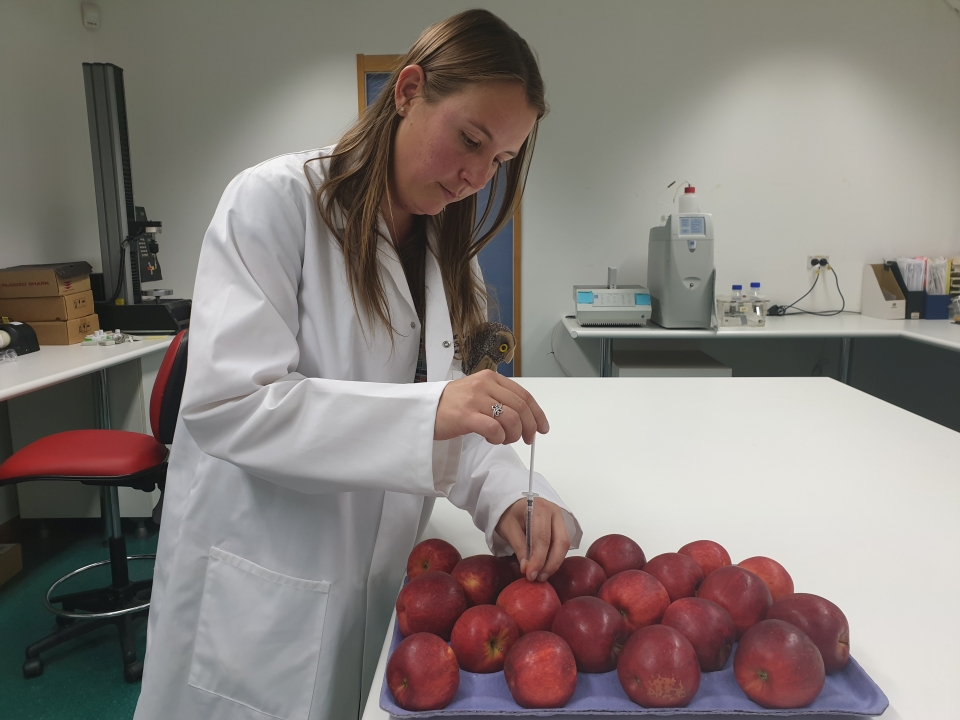
Hannah uses a syringe to collect a sample of ethylene gas from an apple. Why is Hannah interested in how much ethylene the apple is producing? Image: Shelley Hersey, LEARNZ.
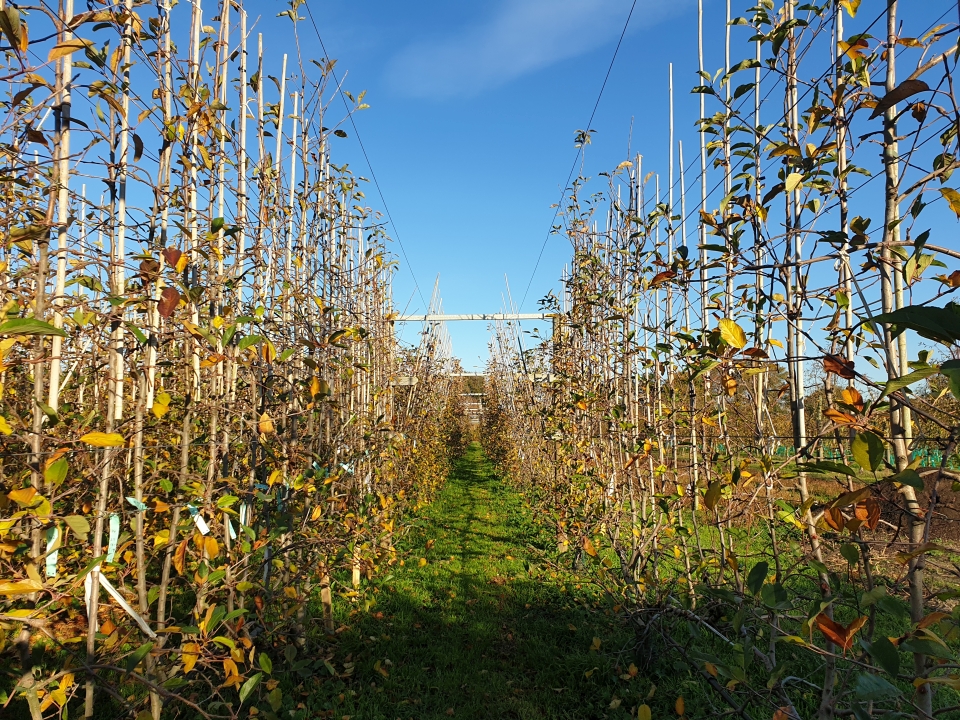
In the future apple trees might be trained to grow along wires rather than branch out. Why might this be useful? Image: Shelley Hersey, LEARNZ.
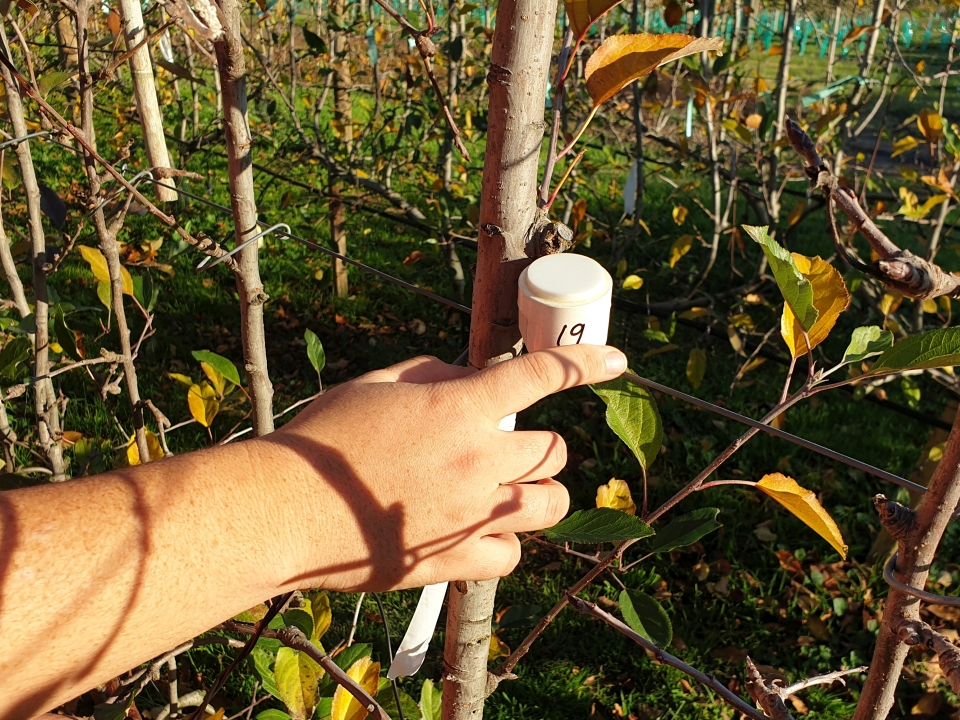
This sensor measures the amount of sunlight that reaches leaves on the apple tree. Why is this information useful? Image: Shelley Hersey, LEARNZ.